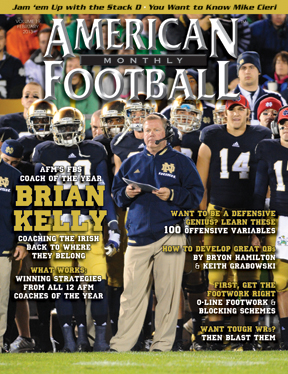Article CategoriesAFM Magazine
|
Coach to Coach – Four Strategies in Preparing Your Quarterback for Successby: Bryon HamiltonHead Coach, Foothill High School, Palo Cedro (CA) © More from this issue At the start of the 2012 season, there were a lot of questions from coaches, players, fans and the local sportswriters regarding the state of our quarterback position. We had graduated a MVP quarterback in 2011 and the heir apparent was an undersized junior without any varsity experience. The questions regarding the position were legitimate and I knew that in order for our team to make another championship run, it was imperative that we continue to have great play at the quarterback position. Former NFL quarterback and current NFL analyst Ron Jaworski once said, “The heartbeat of a football team is the quarterback position and I think everyone who has any intelligence about the game understands you must have consistency at that position to be a championship team”. I have coached quarterbacks for 16 seasons and I know withou....The full article can only be seen by subscribers.
|
|
|||||||
| HOME |
MAGAZINE |
SUBSCRIBE | ONLINE COLUMNISTS | COACHING VIDEOS |
Copyright 2025, AmericanFootballMonthly.com
All Rights Reserved





